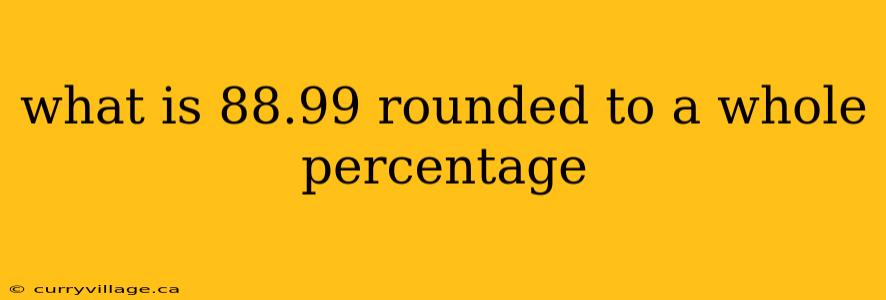Rounding numbers is a fundamental skill in math, crucial for everyday life and various professions. Whether you're calculating a grade, estimating expenses, or presenting data, understanding how to round is essential. This article will clearly explain how to round 88.99 to the nearest whole percentage.
Understanding Percentage Rounding
Before we round 88.99, let's refresh our understanding of rounding. When rounding to the nearest whole number, we look at the digit immediately to the right of the place value we are rounding to.
- If this digit is 5 or greater, we round up.
- If this digit is less than 5, we round down.
For percentages, this process remains the same. We simply treat the percentage as a number.
Rounding 88.99%
Now, let's round 88.99%. The whole number we're aiming for is the tens place. The digit immediately to the right is 9.
Since 9 is greater than 5, we round up. This means we increase the tens digit (8) by one, making it 9. We drop the digits to the right of the tens place.
The Answer
Therefore, 88.99 rounded to the nearest whole percentage is \boxed{90%}.
Practical Applications
Rounding percentages is used extensively in many areas:
- Financial Reporting: Presenting financial data often involves rounding percentages for clarity.
- Academic Grades: Many grading systems round numerical scores to whole percentages.
- Data Analysis: Rounding can simplify large datasets, making them easier to interpret.
- Market Research: Presenting survey results often utilizes rounded percentages.
Conclusion
Rounding 88.99% to the nearest whole percentage is a straightforward process involving the standard rules of rounding. Understanding this simple concept broadens your mathematical skills and improves your ability to work with numerical data in various contexts. Remember, the answer is 90%.
